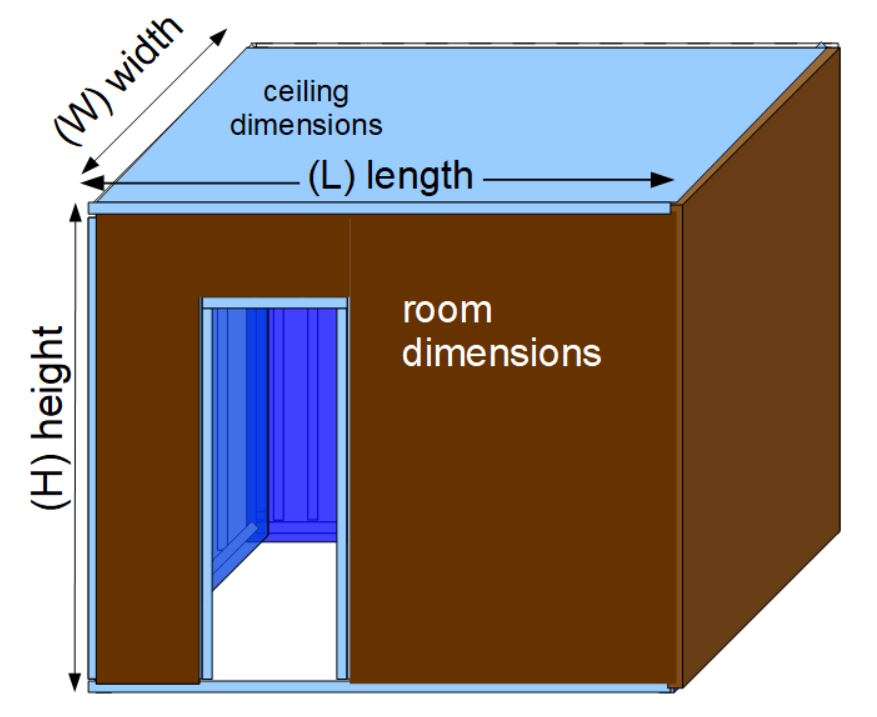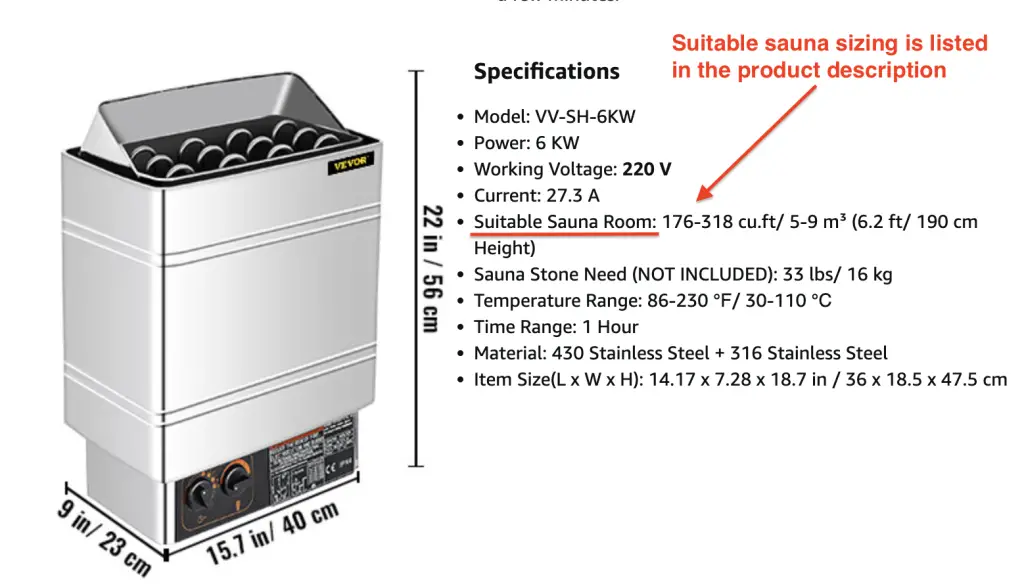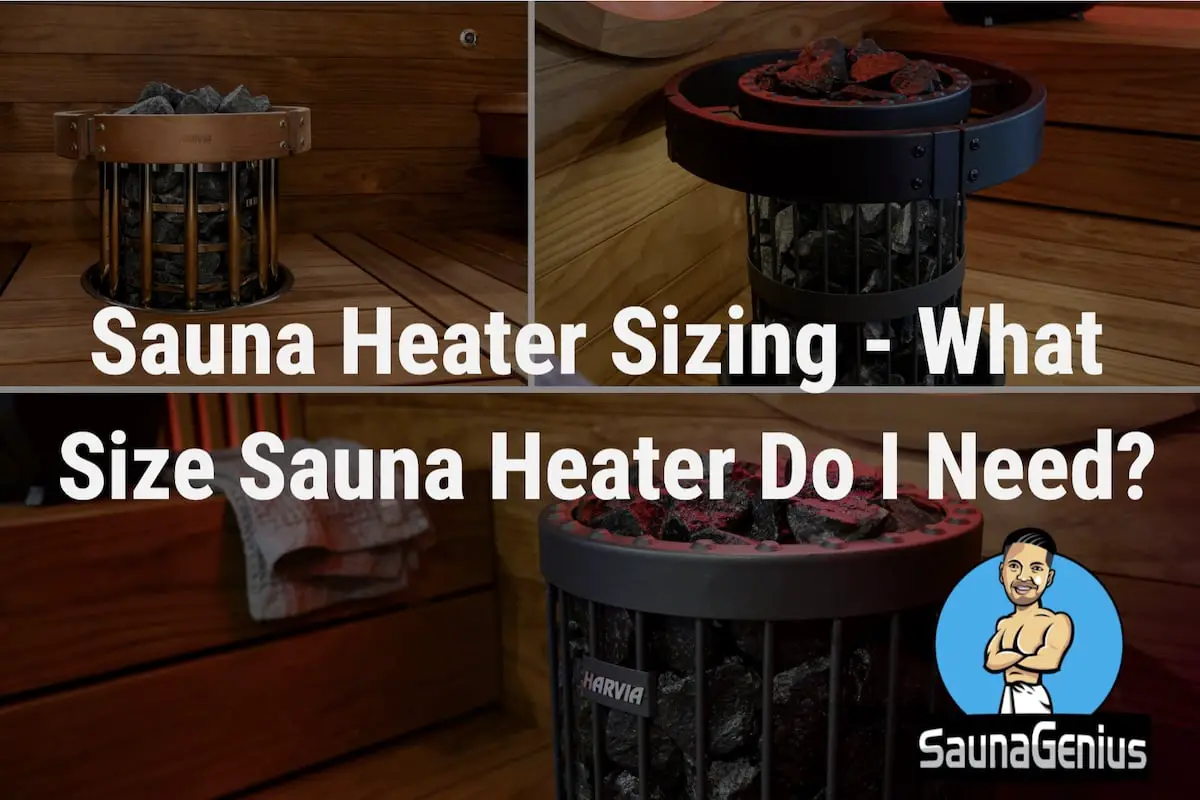This post contains affiliate links.
Sauna is all about relaxation, unwinding, and taking a break from the daily grind. Saunas are a cherished tradition in Finland and all over the world that never goes out of style. Whether you’re spending time alone or with family and friends, the sauna provides exactly what you need.
The sauna heater is the heart of the sauna. It should be visually pleasing and provide the user with the desired steam, whether it be gentle or firm. The sauna experience is at its best when heating the sauna is effortless and comfortable for the user. However, selecting the right size and model of the heater is just as crucial. Whether you’re building a new sauna or replacing an existing heater, there are a few basic factors to consider to ensure you get the best steam.
So, what size sauna heater do you need? Let’s dive in!
Choosing the Sauna Heater Power Output
Selecting the right power for your sauna heater is crucial for an enjoyable sauna experience.
There are a few important factors to consider when designing your sauna, and the first step towards choosing the right sauna heater is determining the size of your sauna.
The sauna’s volume is calculated by multiplying the height, length, and width of the sauna room, which gives you the volume in cubic meters (m3) or in cubic feet. Many sauna heaters are made in Europe, so you may see the reference details listed in metric units.

The product description for sauna heaters clearly displays the necessary information, making it easy for you to choose the right size of heater for your sauna. The information also includes the minimum and maximum size of the sauna suitable for the heater. With these details in mind, selecting the appropriate sauna heater size has never been easier.

You can shop for sauna heaters in your local hardware store, but for a more convenient option, you can find a great selection of sauna heaters also in Amazon .
.
Insulation and Surface Materials Affect the Heater Sizing
Nowadays, saunas are being transformed into beautiful spa-inspired sanctuaries and there are plenty of options to choose from. After all, the sauna must be a place that pleases the eye perfectly.
Glass is a popular surface material because it brings much-needed spaciousness and brightness to the sauna. Gorgeous natural stone or ceramic tiles can be used in firewalls or walls, which blend beautifully with the heater and the overall atmosphere of the sauna. These surface materials increase energy consumption and should also be taken into account when selecting the sauna heater sizing.
Uninsulated surfaces such as glass, stone, and tile increase the power requirement of the sauna heater. Insulation foil should be placed under the tile surface, if possible, to minimize the effect of the cold surface. However, remember that the chimney in use should not be insulated.
When planning the sauna heater, it is worth telling the seller about the sauna surface material so that you can achieve the best result.
Simple Example for Calculating Sauna Heater Sizing
A simple formula for calculating the sizing of the sauna heater:
A sauna with a size of 8.2 feet by 6.6 feet, a height of 7.5 feet, and 32.3 square feet of glass surface. For the glass surface, we will use a 1.2 multiplier.
- The actual volume of the sauna is: 8.2 ft x 6.6 ft x 7.5 ft = 405,9 cubic feet.
- Adding the effect of the glass surface with the multiplier, which is 32.3 x 1.2 = 38.76 cubic ft.
- When selecting the sauna heater sizing, take into account: 316.62 + 38,76 = 444,66 cubic feet of volume.
However, the actual volume of the sauna always determines the maximum power of the sauna heater.
For a sauna with an actual volume of 316.62 cubic feet, either a 9 kW heater or a 10.5 kW heater would be suitable. Due to the glass surface, the better option, in this case, would be a 10.5 kW heater. Without the glass surface, a 9 kW heater would suffice.
Note: An inspector and your local building code may require a sauna heater that is not too powerful for the given space.
I created a simple calculator to calculate the actual and effective size of your sauna room.
In the “Glass Surfaces” field you can add the total square footage of glass surfaces or other uninsulated surfaces.
Actual Sauna Room Size: cubic ft
Effective Sauna Room Size: cubic ft
Typical Sizing for the Most Common Sauna Sizes
Here are the general minimum and maximum sauna sizes for some of the most common heater powers:
| Sauna Room Volume | 6kW | 9kW | 10.5kW |
|---|---|---|---|
| Minimum | 176 cubic feet (5m�) | 282 cubic feet (8m�) | 318 cubic feet (9m�) |
| Maximum | 318 cubic feet (9m�) | 459 cubic feet (13m�) | 530 cubic feet (15m�) |
| Number of people (estimation) | 1-4 | 2-6 | 2-8 |
It Is Important to Keep the Ventilation in Mind
Proper ventilation is crucial in a sauna, so it’s important to be careful and pay special attention to it. This ensures that the heater operates correctly and there is fresh air in the sauna to enjoy the steam.
In electrically-heated saunas, the fresh air vent should be placed above the sauna stones whenever possible, but far enough away from the thermostat or temperature sensor. The exhaust air should be directed out from under the benches opposite the heater. This ensures the proper mixing ratio of incoming and outgoing air and even distribution of heat
If the heater is installed next to a wall, the ideal location for the fresh air vent is 4 ft (120 cm) above the floor behind the heater, so fresh air effectively mixes with the warm air rising from the heater. It’s also important to note that the ventilation exhaust valve installed above the benches should be closed during use.
Ventilation in a wood-fired sauna works differently because the heater consumes a lot of air when burning. Usually, replacement air is directed down next to the heater. If a wood-fired heater is replaced with an electric heater or vice versa, the ventilation always needs to be checked.
Did you find this article helpful or do you have more questions about the sauna heater sizing? Let me know in the comments!


Hi,
I am currently renovating an old sauna shack on my new property. 454 cubic feet space. Not including 3 windows I need to replace. Possibly make it 2 windows.
Removed the wood burning stove and will be replacing it with an electric heater.
My problem is choosing a heater for this space that is price reasonable and most importantly efficient.
Must be equipped with a phone App control.
advise on fresh air ventilation would be most appreciated.
any advise would be awesome.
Chris from North Bay Canada.
thank you
Hey Chris! I have listed some recommended electric sauna heaters in this article: https://saunagenius.com/choosing-an-electric-sauna-heater/
For fresh air ventilation, usually 1 or 2 air vents at floor level are enough. Typically, the sauna door has ventilation as well, unless the door opens directly to outside air.
Hope this helps!
Hi Jussi, great info on the article/site I am thinking of converting an upstairs indoor/walk-in closet to a sauna. Dimensions: 5.25′ long x 3.41′ wide x 8.41′ tall—looking at 150 sq feet, or 176 sq feet with the glass door multiplier. Can I have a gap under the door for ‘fresh’ air (although it’s just coming from inside the house? I can run a vent through my attic for exhaust…Also, the pricing you linked for heaters that can handle a 6kw heater–seems like there is a wide discrepancy in pricing. Am I missing something? Seems like a heater for $165 in comparison to $1000+ must be significant. I understand you get what you pay for. Controls? Safety?